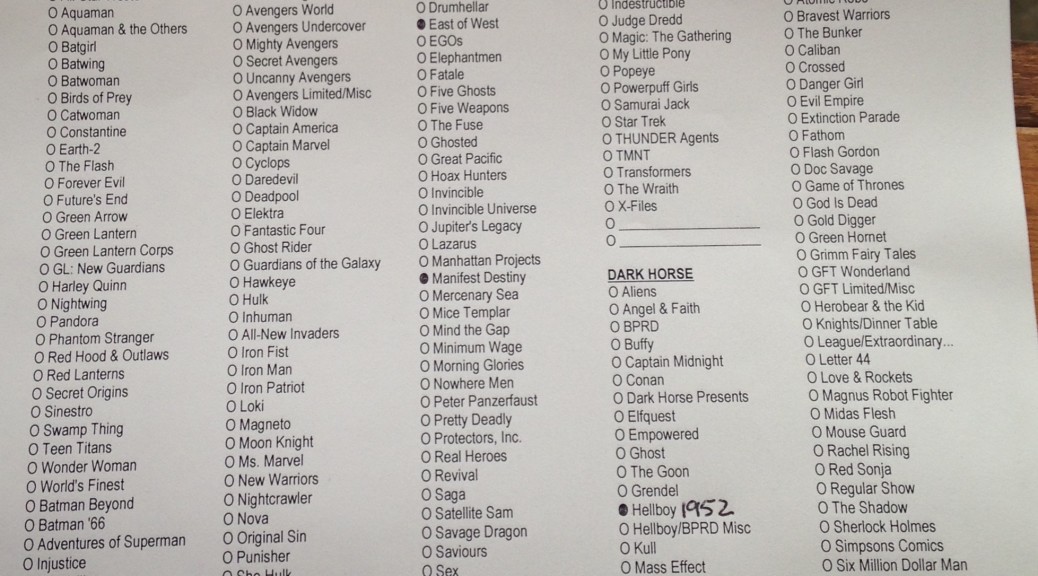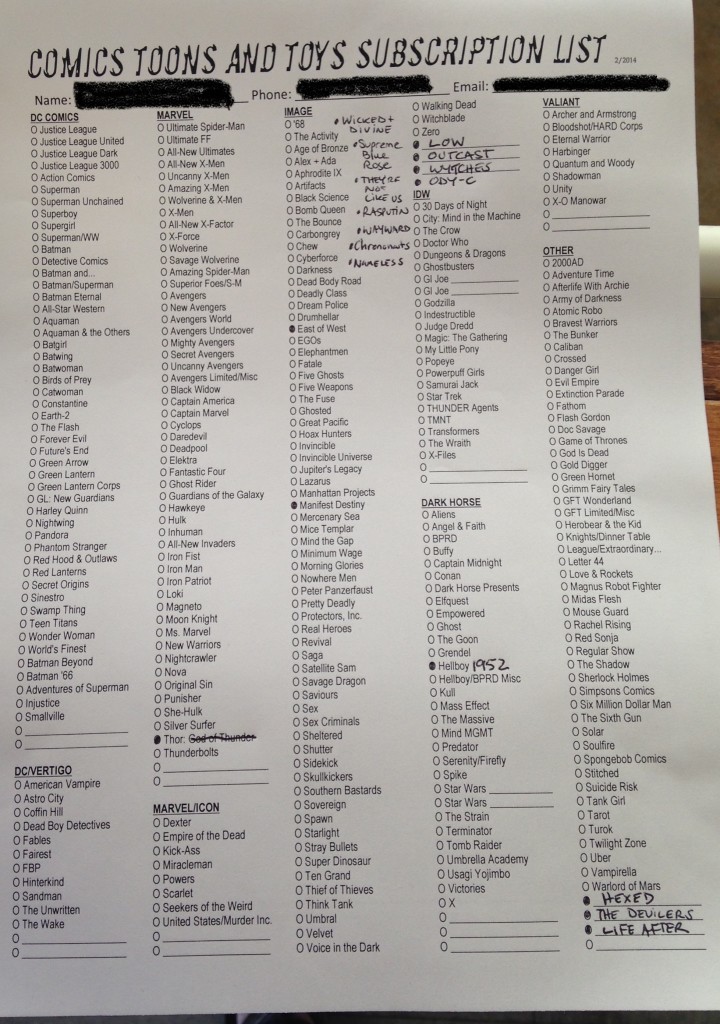Since 2003, Charles Schneeflock Snow has been writing and drawing Sordid City Blues, which chronicles the lives of young urban adults faced with difficult questions of relationships and faith. Sacred and Sequential met with Mr. Snow in a comfortable corner of the Internet to discuss his work and his recent resumption of the series after a five-year hiatus.
Sacred and Sequential: Thanks for talking with us, Charles. Let’s start with the most straightforward question: What motivated you to write Sordid City Blues?
Charles Schneeflock Snow: It’s an obsession. I worry about sex and religion a lot (both by themselves and in combination). Drawing comics is the main way I cope with things that worry me, so here we are.
S&S: What kind of response to your work do you get (or expect to get) from readers who identify as Christians? How might this response be said to differ from that of other audiences
Snow: Well, I know some Christians who like the comic, and identify with the characters’ lives. Which doesn’t differ too much from the response of more secular readers, honestly. But SCB doesn’t have much penetration into Christian culture – there’s a long list of doctrinal and moral prerequisites you need for that that I could never live up to.
Which is fine. I’d never want SCB to be a “Christian” comic. Christian is a fine noun, but a terrible adjective.
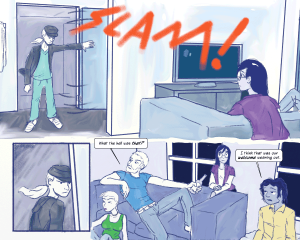 Continue reading Talking with Charles Schneeflock Snow on SORDID CITY BLUES
Continue reading Talking with Charles Schneeflock Snow on SORDID CITY BLUES
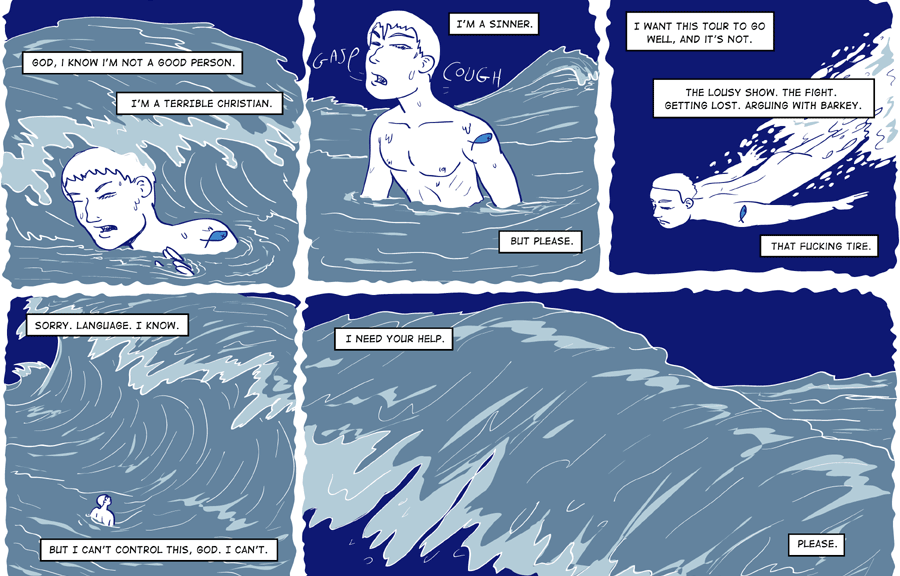

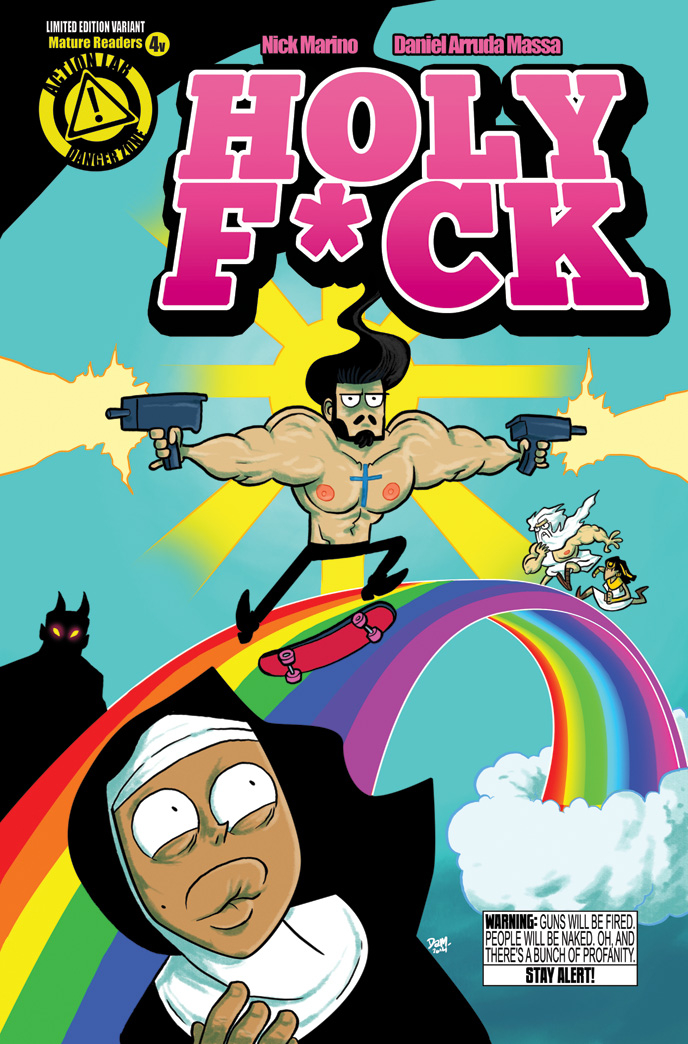 Today marks the release of the fourth and final part of Nick Marino and Daniel Arruda Massa’s Holy F*ck. The issue brings a high-action conclusion to Jesus, Satan, and the nun Maria’s struggle against Zeus, Isis, and the multi-pantheonic corporation Polydynamis’ attempt to plunge the world into nuclear chaos and feast off the belief they hope this will inspire.
Today marks the release of the fourth and final part of Nick Marino and Daniel Arruda Massa’s Holy F*ck. The issue brings a high-action conclusion to Jesus, Satan, and the nun Maria’s struggle against Zeus, Isis, and the multi-pantheonic corporation Polydynamis’ attempt to plunge the world into nuclear chaos and feast off the belief they hope this will inspire.